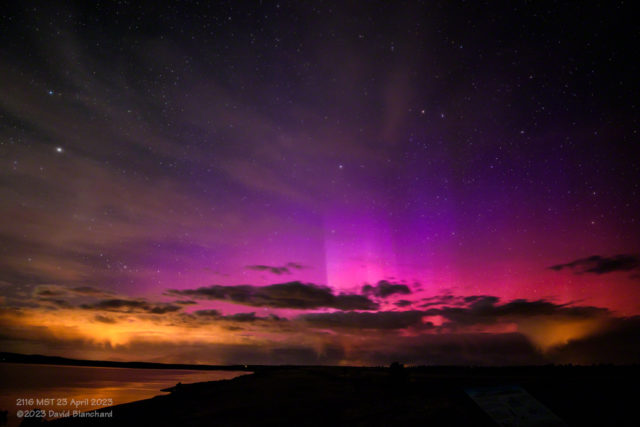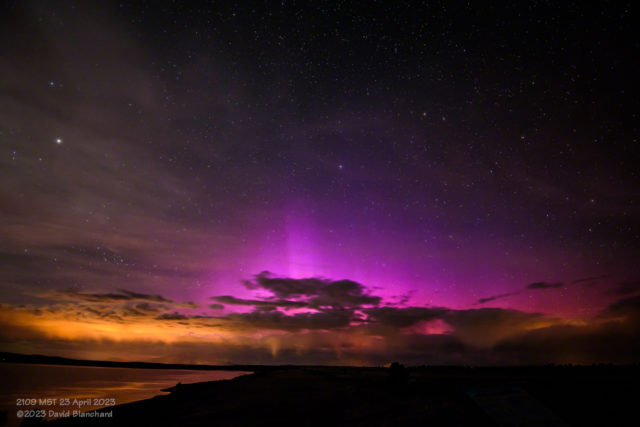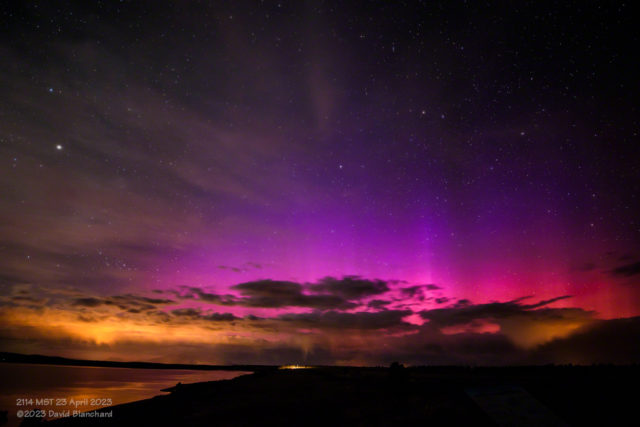
It has been called the Great Aurora Storm of 2024 and it occurred on May 10–13 with the peak occurring on May 10–11. It was seen across high, middle, and even low latitudes and it was the strongest geomagnetic storm in decades. From the NASA science site:
May 2024 has already proven to be a particularly stormy month for our Sun. During the first full week of May, a barrage of large solar flares and coronal mass ejections (CMEs) launched clouds of charged particles and magnetic fields toward Earth, creating the strongest solar storm to reach Earth in two decades — and possibly one of the strongest displays of auroras on record in the past 500 years.
At its most intense the event was classified as a G5-class geomagnetic storm (Kp = 9).
Time-lapse video of the aurora substorm. Images at 30-second intervals.




We were in Colorado at the time visiting family and I only carried a Sony RX10, a camera with a 24–200mm zoom at constant f/2.8 aperture. It’s a good camera but doing long exposures at high ISO at night is not its strong point. Well, you’ve probably heard the saying: “the best camera is the one you have with you.”


So I used what I had with me. The results were mixed. Some of the images are noisy at high ISO settings. Some of the long-exposure images show tripod shake resulting in streaky stars. And so on.
There have been some amazing photographs published on social media sites–including a shot that I have been trying to get for the past few years of increasing auroral activity.
Ah, well. We still haven’t hit the solar max which is expected between late 2024 and early 2026 so there will be other opportunities.
So here are some photographs taken from our location in northeast Colorado.



